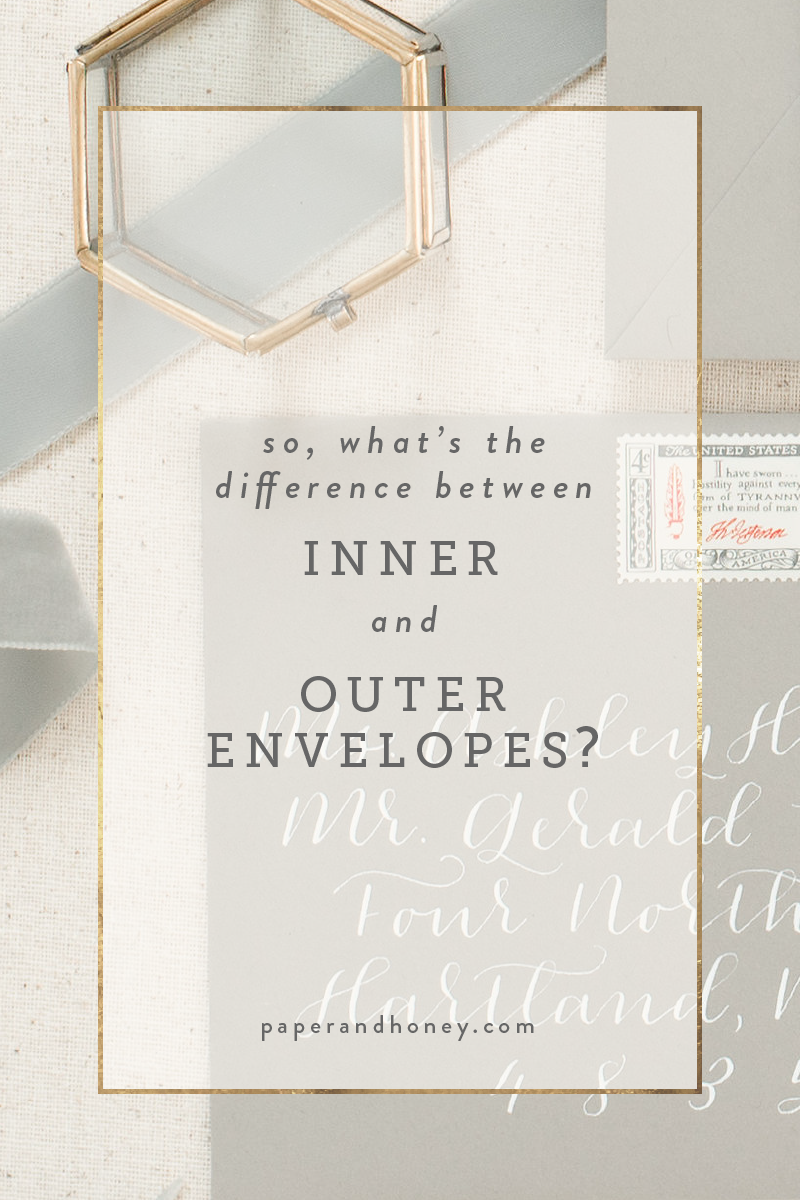
When working one-on-one with my clients to craft their perfect suite, I get asked a lot of the same questions over and over. Which is great — that’s what I’m here for! But like Moose and Pippa right around dinnertime, specific questions tend to follow me around:
So, what’s the difference between inner and outer envelopes, anyway?
Which do I need?
I mean, I know my mom insists we get both… but do I have to?
I have a plethora of educational canned responses saved up for emails like these, so I thought it was the perfect time to add this topic to the Stationery 101 series.
Unless you’re new around here, it’s no secret that I’m a sucker for fun facts. And fun paper facts? Well, they get me feeling like Sunday morning. Way back when mail was delivered by hand, envelopes could get fairly dirty en route to their destinations. Picture a mailman coming up to your front door, doing you the favor of removing that outer envelope, and handing you the clean, pristine inner envelope. Fancy, right? (I picture something like this.) You’re too good for that regular old street dirt, I know.
Tradition since then has held, and invitations for formal events are often sent with both inner and outer envelopes. The outer envelope contains the guest’s mailing address, and the inner envelope states exactly who is invited to the event.
The choice of inner and outer envelopes can be super beneficial for a few reasons:
- By having two sets of envelopes, you’re able to get super clear who is invited to your wedding — and, by omission, who is not. Where the outer envelope could read, “Mr. and Mrs. David Wilson / The Wilson Family,” the inner envelope would get more specific with, “Mr. and Mrs. Wilson / David and Sarah.” If the family has children who are invited, their names would read on the second line in the inner envelope. If the children are not invited, their names are left off. Inner envelopes help eliminate the potential for any awkward questions regarding your guest list.
- Inner and outer envelopes are the more traditional option. If your wedding is black tie, classic, or just all-around formal, you may want to stick with having both sets of envelopes to abide by wedding etiquette. Your invitation suite will be absolutely gorgeous to be sure, but do you know how impressive two sets of envelopes are? They help set the tone for your event.
- Even while having both inner and outer envelopes is a formal option, you’re still able to get a little fun and personal when listing individual names on the inner envelopes. Meaning “William Holcomb” becomes “Grandpa,” or, if you’re like me and had a bad time with your hard Gs as a kid, “Papa B.”
“I don’t want to break etiquette, but do I have to have both sets?”
Not at all! I like to leave the preference up to my clients. While both sets is in accordance to etiquette a lá Emily Post, at the end of the day, it’s truly up to you. Maybe your wedding is laid-back and intimate, maybe you’re looking to invest your stationery dollars in letterpress instead (good choice, girlfriend), or maybe you’re just not looking to use more paper than you have to. I see your earth-friendliness and I salute you. At the end of the day it’s your choice to select the specific components of what makes your wedding invitation special for you and your sweetheart.
If this post was helpful, be sure to check out the rest of the Stationery 101 series! Even better? Let’s work together to craft your family’s first heirloom. Get in touch, won’t you? xo